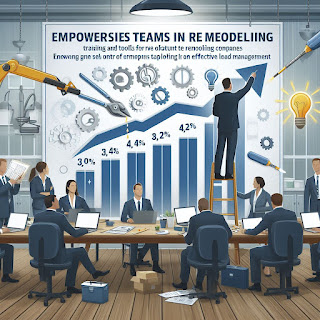SaaS vs. On-Premise: Choosing the Right Estimating Software Deployment Model
In today's digital age, choosing the right software deployment model is crucial for businesses looking to streamline their operations, enhance productivity, and stay competitive. This decision is particularly significant when it comes to estimating software, as it directly impacts a company's ability to accurately forecast project costs, manage resources efficiently, and ultimately, deliver projects on time and within budget.
Two primary deployment models dominate the landscape: Software as a Service (SaaS) (i.e. Remodel Cloud) and On-Premise solutions. Each option offers distinct advantages and considerations, making the choice between them a critical decision for organizations of all sizes. Let's explore the key factors to consider when deciding between SaaS and On-Premise estimating software.
Understanding SaaS Estimating Software
SaaS estimating software, such as Remodel Cloud, are also known as cloud-based solutions, operates on a subscription model where users access the software via the internet. This model eliminates the need for companies to install and maintain software on their own servers, as all data and applications are hosted and managed by the software provider. Key characteristics of SaaS estimating software include:
Accessibility: SaaS solutions offer unparalleled accessibility, allowing users to access the software from anywhere with an internet connection. This accessibility is particularly advantageous for remote teams or organizations with multiple offices.
Scalability: SaaS solutions are highly scalable, enabling businesses to easily adjust their subscription plans to accommodate growth or fluctuations in demand. This scalability ensures that organizations can scale their estimating software in line with their evolving needs.
Automatic Updates: SaaS providers handle all software updates and maintenance tasks, ensuring that users always have access to the latest features and enhancements without the need for manual intervention.
Cost Structure: SaaS estimating software typically operates on a subscription-based pricing model, with fees typically charged on a monthly or annual basis. This predictable cost structure eliminates upfront capital expenditures and allows businesses to budget more effectively.
Exploring On-Premise Estimating Software
On-Premise estimating software, as the name suggests, is installed and run on servers located within the organization's premises. Unlike SaaS solutions, On-Premise software requires businesses to purchase and maintain their own hardware infrastructure, as well as handle software installation and updates internally. Key characteristics of On-Premise estimating software include:
Control: On-Premise solutions offer businesses greater control over their software environment, as all data and applications are hosted internally. This level of control can be appealing to organizations with strict data security or compliance requirements.
Customization: On-Premise software solutions often provide greater flexibility for customization and integration with existing systems, allowing businesses to tailor the software to their specific needs and workflows.
Data Security: For businesses handling sensitive or confidential data, On-Premise solutions may offer greater peace of mind, as they have direct control over data storage and security measures.
Upfront Costs: Unlike SaaS solutions, On-Premise software typically requires a significant upfront investment in hardware, software licenses, and implementation costs. Additionally, businesses are responsible for ongoing maintenance and support expenses.
Choosing the Right Deployment Model
When deciding between SaaS and On-Premise estimating software, businesses must carefully evaluate their specific requirements, preferences, and constraints. Consider the following factors:
Budget: Assess your budget constraints and determine whether a predictable subscription-based model (SaaS) or upfront capital expenditure (On-Premise) aligns better with your financial objectives.
Accessibility and Mobility: Consider the importance of remote access and mobility for your team. If remote work is prevalent or if you require access from multiple locations, a SaaS solution may be more suitable.
Scalability: Evaluate your organization's growth projections and determine whether scalability is a critical factor. SaaS solutions offer seamless scalability, whereas On-Premise solutions may require additional investments in hardware and infrastructure as your business expands.
Security and Compliance: Assess your data security requirements and regulatory compliance obligations. Determine whether the level of control offered by an On-Premise solution is necessary to meet your security and compliance needs.\
Customization and Integration: Consider the level of customization and integration capabilities required to align the estimating software with your existing workflows and systems.
Choosing between SaaS and On-Premise estimating software involves careful consideration of factors such as accessibility, scalability, control, security, and cost. By evaluating your organization's specific needs and priorities, you can make an informed decision that aligns with your business objectives and sets you up for success in project estimation and management. Whether you opt for the flexibility of SaaS or the control of On-Premise, investing in the right estimating software deployment model can empower your team to deliver projects more efficiently and effectively.
The Remodel Cloud team is first and foremost skilled technology consultant and would very much like to show and demonstrate the advantages of our SaaS solution. Contact Remodel Cloud to learn more about both SaaS and on-premise solutions.



Comments
Post a Comment